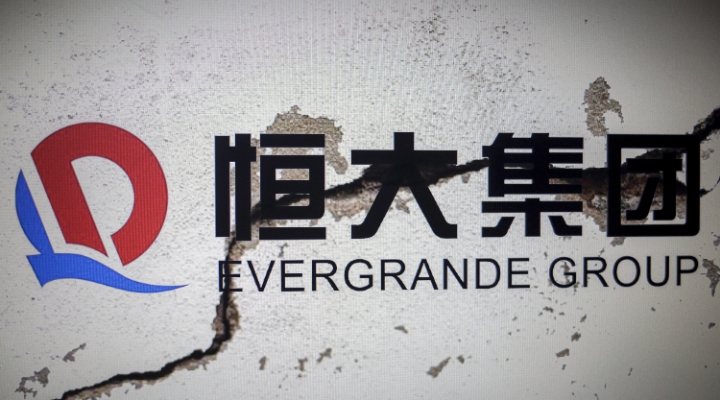
In light of the ongoing decline in China's housing sector, we present a Q&A with Mali Chivakul, emerging markets strategist at J. Safra Sarasin, on what could unfold in the next two to three years
How Important is China's Housing Sector?
Most recent estimates (see Rogoff and Yang, 2022 for example) show that total domestic real estate activity contributed 23% of total final demand in 2021. This included 12% of direct value-added from construction and real estate services as well as contribution through upstream sectors (materials and other services). Real estate and construction also accounts for around 20% of urban employment. The sector is also considered systemically important for financial stability. Real estate-related debt accounts for about 25% of bank assets and around half of that is connected to local governments (Xiong, 2023).
How Did China's Housing Market Get so Distorted?
There are many structural distortions. On the demand side, housing remains the most important investment instrument (at around 70% of total household assets). Between 20% and 40% of urban households, depending on the sources, own more than one home. High household savings (due to the lack of social security, health insurance and pensions), financial repression (low household deposit rates), capital account restrictions and the lack of other investment alternatives have contributed to investment demand for housing.
Together, housing demand has been much stronger than what fundamental demand (driven by family formation and upgrade demand) would suggest. On the supply side, land supply for real estate development is controlled by each local government. Local officials tend to have a bias towards overbuilding as real estate activities and infrastructure investment (which supports real estate development) help achieve their GDP growth targets as well as revenues.
What Role Has The Government Played?
Previous boom-and-bust cycles have been in part driven by the distortions listed above. They have also been amplified by central government’s conflicting desire to smooth out the economic cycles through local government spending and to make houses more affordable.
Local governments' ability to borrow since the global financial crisis (through their local government financing vehicles) have expanded their ability to spend and build, under an implicit guarantee of the government. Building boom, together with easier access to mortgages, was the feature of the latest boom (pre-2022).
When affordability deteriorated, local governments usually turned to administrative measures to control demand and prices. These measures are also used during the downturns. The most famous one is home purchase restrictions on investment properties. Others include price controls.
How Bad is The Overvaluation?
It is difficult to compare house prices at the national level as house prices vary greatly across cities and regions. Moreover, in China’s case, many administrative measures are in place, making it difficult to gauge the real market price.
According to Rogoff and Yang, 2021, home price-to-income ratios in China's Tier I cities in 2018 were higher than those of other major cities in the world. Beijing's and Shanghai’s were around 40, while London’s and Paris’ were around 20.
What is The Estimated Housing Oversupply?
Excess supply (unsold houses in year of sales) is most acute in Tier II and III cities and it will take two to three to digest the oversupply there (Rogoff and Yang, 2021). Another measure, vacancy rate, is also a good indicator of housing oversupply. Rogoff and Yang (2021) reports figures from the Research Centre for China Household Finance at 17% for Tier I cities and over 20% for Tier II and II cities. Another study (Tan and others, 2020, uses a unique data set of night time light) reports similar vacancy rates (15-19% in Tier I cities, around 20% in larger Tier II cities and slightly higher than 20% in other Tier II cities). Compared to other countries, China’s 20% is one of the highest.
Will Housing Demand Improve in The Medium Term?
China’s home ownership rate among urban dwellers (64% of total population) has reached 96% according to the People’s Bank of China. Available floor space per capita around 40 square meter is now on par with European countries (although with a much higher vacancy rate). With little price appreciation expectations currently, speculative demand has already dropped significantly. Fundamental demand will be driven by household formation, urbanisation and upgrade demand.
The former two have seen a significant slowdown in the last few years due to aging demographic, lower marriage rate and an already elevated urbanisation rate. Having a son is one of the determinants of having more than one home. This suggests that household formation may not play an important role in driving new demand for those already owning several homes. Upgrade demand is usually driven by an expansion of family size or the desire for newer homes. The former (fertility rate) has dropped sharply over the pandemic years, while the latter will depend on job and income prospects.
Glaeser and others (2017) offers simulations of where house prices could be by 2030. Their results mainly depend on assumptions on future income growth, potential urban population growth and housing supply growth. In their baseline (calculated with 2015 data), negative price growth over the medium term is most likely in Tier II cities. The government, however, does have a control of future housing supply. Lower future supply will help support prices but will imply weak economic activity given the importance of the housing sector in China.
What is The Economic Outlook Now?
Our view is that the government will err on lower future housing supply in order to facilitate a more moderate price adjustment. China's financial sector cannot afford a large drop in home prices given the amount of debt that is collateralised by properties.
In that case, we expect economic growth to be weak in the next two to three years (closer to 4%). Higher government spending especially to support households could help smooth the downturn. A reform to local-central government fiscal relationships and a clean-up of non-performing real estate assets could help speed up the recovery.




























